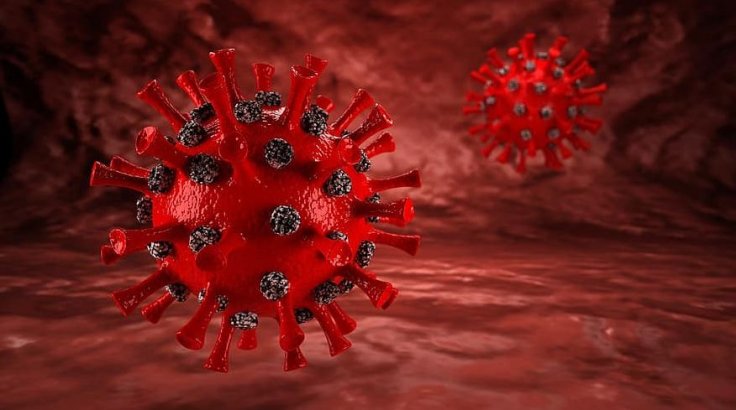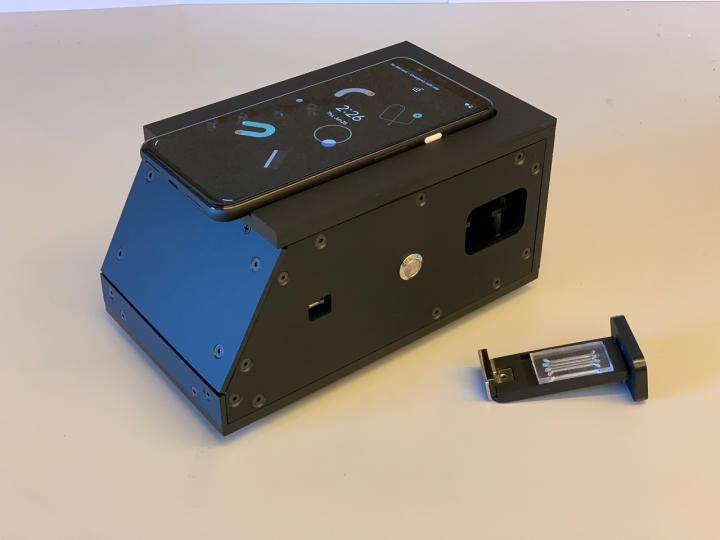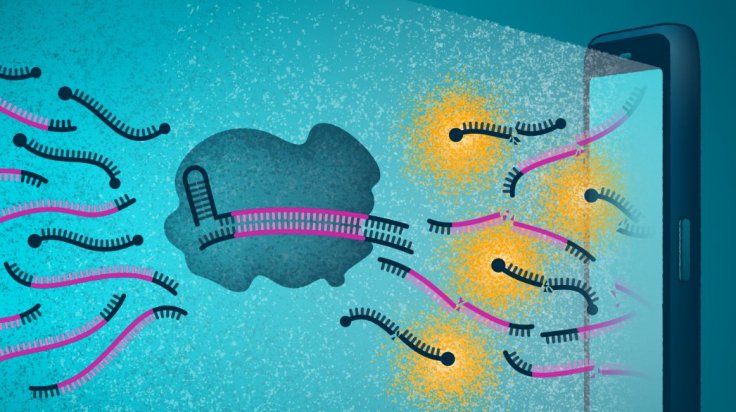There is not much that a smartphone cannot do these days. However, can it help detect the SARS-CoV-2 coronavirus? According to a new study, yes, it can. Scientists have designed a new assay that can identify the presence of the COVID-19-causing virus in a nasal swab through a device attached to a regular smartphone.
According to researchers from Gladstone Institutes, University of California in Berkeley, and the University of California, San Francisco, the research which is still ongoing, has shown encouraging results and has the potential to be applied to a wide variety of viruses.
"Our study shows that we can do the detection part of this assay very quickly, making the measurement with mass-produced consumer electronics. We don't need fancy laboratory equipment," said Dr. Daniel Fletcher, co-senior author on the study, in a statement.
Advantage Over Current Methods

Existing COVID-19 tests rely on the conversion of RNA into DNA, followed by amplification (making multiple copies of DNA sequence) using Polymerase chain reaction (PCR) technology. "What really makes this test unique is that it uses a one-step reaction to directly test the viral RNA, as opposed to the two-step process in traditional PCR tests," stated Dr. Melanie Ott, co-senior author of the study.
The new test utilizes the CRISPR–Cas technique, where the viral RNA is detected using the enzyme Cas13. Nasal swabs that contain SARS-CoV-2 RNA are used. "Instead of the well-known CRISPR protein called Cas9, which recognizes and cleaves DNA, we used Cas13, which cleaves RNA," said Parinaz Fozouni, co-author of the study.
An RNA-based probe or reporter molecule is added to the reaction, which when cleaved, produces fluorescence that a camera can detect. The sample is inserted into a device that is attached to a smartphone. If viral RNA is detected in the sample, Cas13 is triggered, which in turn cleaves the probing molecule. This leads to the emission of fluorescent signals.

Now, the camera of the smartphone, which has been fundamentally transformed into a portable microscope, can spot the fluorescence and confirm the presence of COVID-19 in the swab. The fluorescence detector comprises of a laser that provides illumination and excites the fluorescence, and an extra lens that helps in the collection of light.
Quick Detection And Results
When the team used patient samples to test the setup, they learnt that it could process the samples faster (or quicker turnaround time) and provide quick results when the viral loads were clinically relevant. In a particular instance, the authors found that the device precisely detected a series of samples in below 5 minutes. Most importantly, for samples with a low viral load, results are produced within just 30 minutes after detection.
"Recent models of SARS-CoV-2 suggest that frequent testing with a fast turnaround time is what we need to overcome the current pandemic. We hope that with increased testing, we can avoid lockdowns and protect the most vulnerable populations," emphasized Dr. Ott. The new technique is the outcome of the collaboration between Dr. Ott, Dr. Fletcher, and Nobel laureate Dr. Jennifer Doudna.
Portable With Scope for Wider Application

Other than faster testing times, the biggest advantage of the new test is the portability it offers by eliminating large specialized equipment and relying solely on a smartphone. This can potentially enable its availability for home or point-of-care use.
"The simpler chemistry, paired with the smartphone camera, cuts down detection time and doesn't require complex lab equipment. It also allows the test to yield quantitative measurements rather than simply a positive or negative result," stressed Dr. Ott.
Additionally, the testing methodology can also be adapted for the detection of other respiratory viruses such as influenza, and other lethal RNA viruses such as HIV, by making slight alterations to accommodate the different sample collection methods.
Highlighting its potential, Dr. Ott said, "We will need to change the extraction methods because we'll be dealing with blood instead of nasal swabs, but it's really helpful that we've developed the fluorescent detection part."









